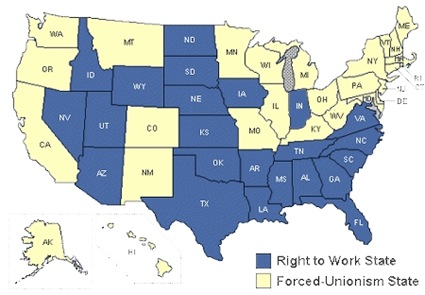Like most medical facilities, Cincinnati Children’s Hospital appears to require that all of its employees receive an annual flu shot. It fired Sakile Chenzira, a customer service representative, for refusing to comply. Chenzira sued, claiming that because the flu vaccine contains eggs the requirement violated her religion—veganism—which prohibits the ingestion of any animals or animal by-products.
In Chenzira v. Cincinnati Children’s Hosp. Med. Ctr. (S.D. Ohio 12/27/12) [pdf], the federal court denied the hospital’s motion to dismiss the religious discrimination claim. The core issue the court decided is whether veganism is a sincerely held religious belief, or merely a moral or secular philosophy or lifestyle (as the hospital argued). In support of her argument, Chenzira cited an essay, The Biblical Basis of Veganism. She also cited bible verse to her employer when she made her request for a religious accommodation.
In denying the motion to dismiss, the court stated:
The Court finds that in the context of a motion to dismiss, it merely needs to determine whether Plaintiff has alleged a plausible claim. The Court finds it plausible that Plaintiff could subscribe to veganism with a sincerity equating that of traditional religious views.
In other words, the court punted. It allowed the parties to test in discovery whether Chenzira’s veganism rises to the level of a sincerely held religious belief. For what it’s worth, the lone other case I could find that discussed whether veganism is a religion worthy of protection under employment discrimination laws—Friedman v. Southern Cal. Permanente Med. Group (Cal. Ct. App. 9/24/02)—concluded that veganism is not a religion, but a personal philosophy and way of life.
This case raises an interesting question—how far should businesses go to accommodate employees’ requests for special treatment. I cover this issue in depth in The Employer Bill of Rights: A Manager’s Guide to Workplace Law, concluding, “Sometimes, the path of least resistance makes sense.”
For a hospital, there may not be a path of least resistance when comes to public health issues such as flu vaccinations. Other businesses, however, have to balance the burden of granting the accommodation versus the risk of a lawsuit (and the costs that go with it). In many cases, the accommodation should win out, because it is easier and less costly than denying the request and eating a lawsuit, even if it’s a defensible lawsuit.
For example, if you face this same vaccination issue at your widget company, is there a harm in letting employees opt out on religious ground, even if it’s a borderline (at best) religion, like veganism. You can defend your decision to deny the request based on the bona fides of the claimed religion. But, where does that get you? Are you on right side of the law? Probably. Have you irreparably damaged your relationship with your employee, while at the same time demonstrating to your entire workforce that you practice policies of exclusion instead of inclusion? Possibly.
In other words, there are more factors to consider other than answering the question, “What does the law say about this?” How your incorporate those other factors into your accommodation decision-making is often more important than simply answering the legal question.
[Hat tips: The Employer Handbook Blog, Employment & Labor Insider, and Jottings by an Employer’s Lawyer]




![Best-of-2012_thumb3_thumb[4]_thumb Best-of-2012_thumb3_thumb[4]_thumb](http://lh6.ggpht.com/-MUiI0vq_xpA/UNNvoi6ER1I/AAAAAAAAB60/0-iIlEDniDs/Best-of-2012_thumb3_thumb4_thumb_thu.jpg?imgmax=800)

![Best-of-2012_thumb3_thumb[4] Best-of-2012_thumb3_thumb[4]](http://lh4.ggpht.com/-UHKtAW5qZbY/UNNwj1HhqAI/AAAAAAAAB7U/6yxK6UdK_ck/Best-of-2012_thumb3_thumb4_thumb.jpg?imgmax=800)

 Last week I shared
Last week I shared 